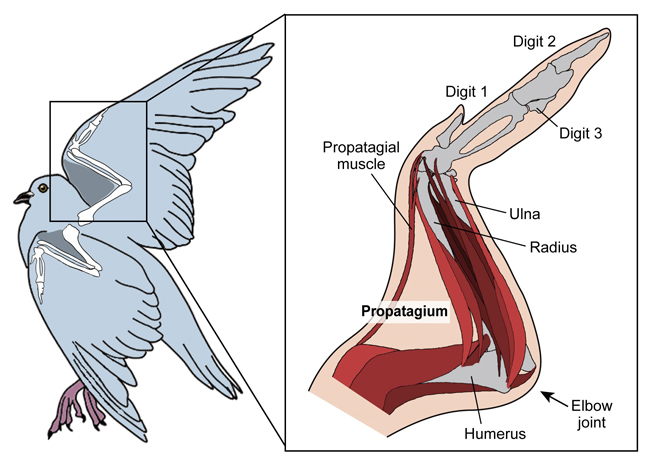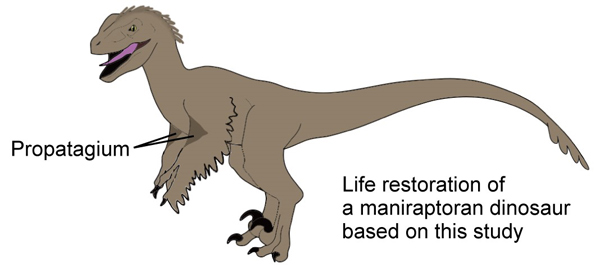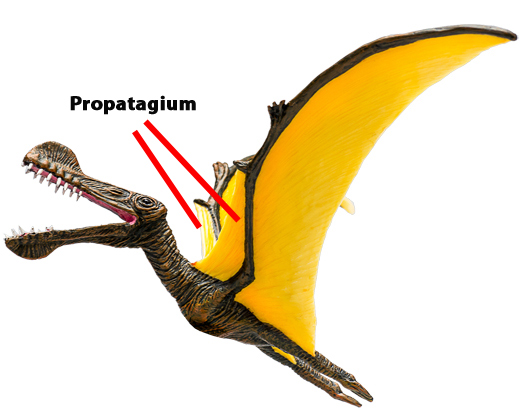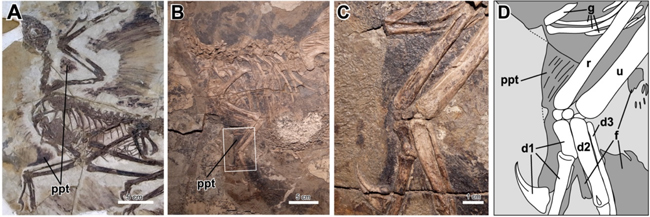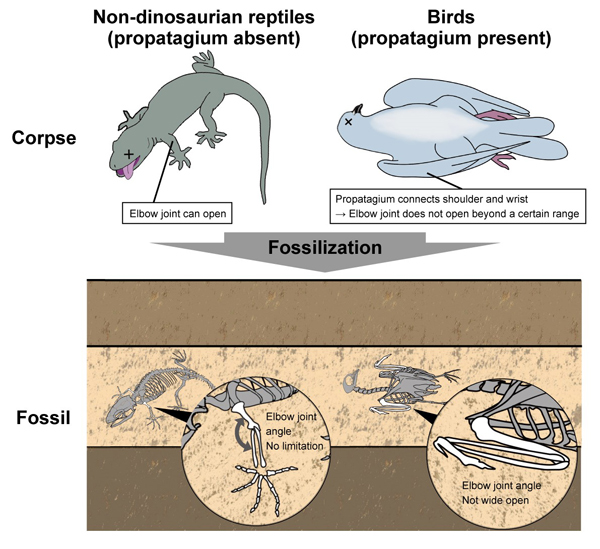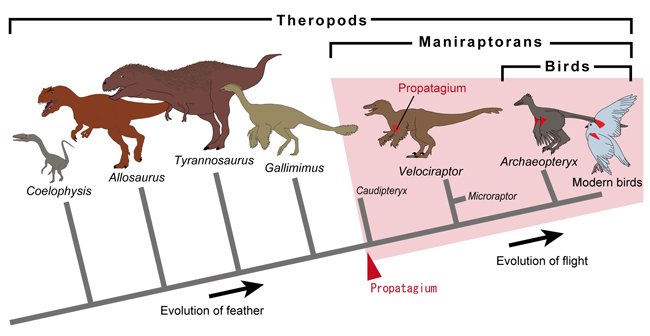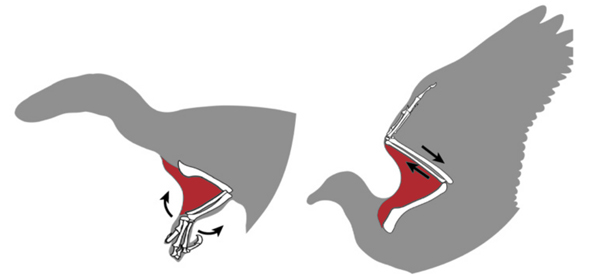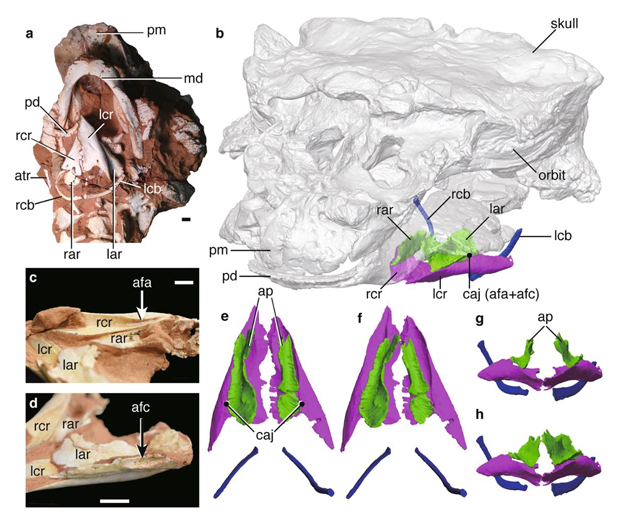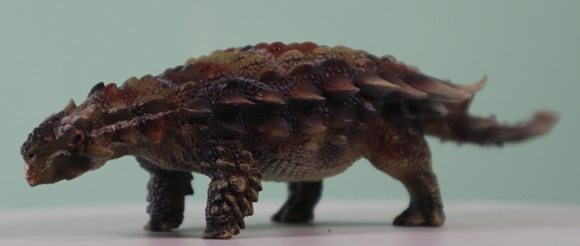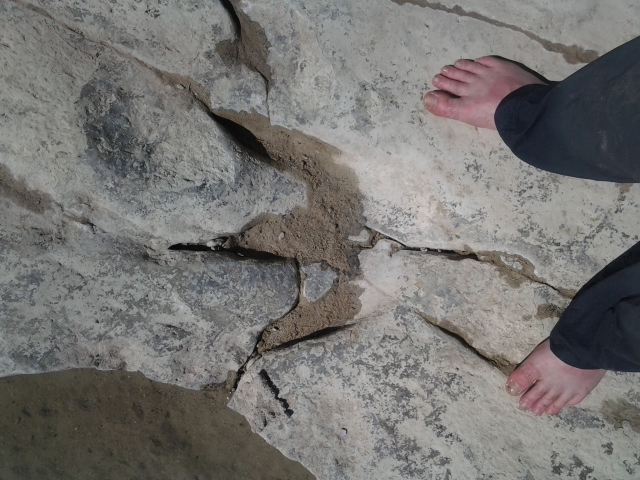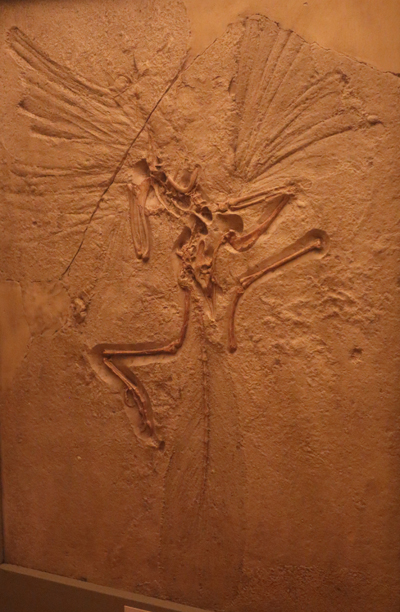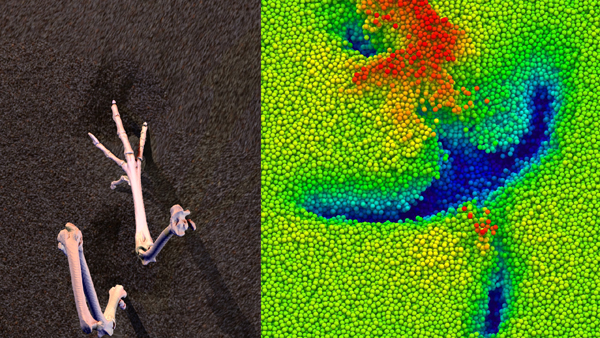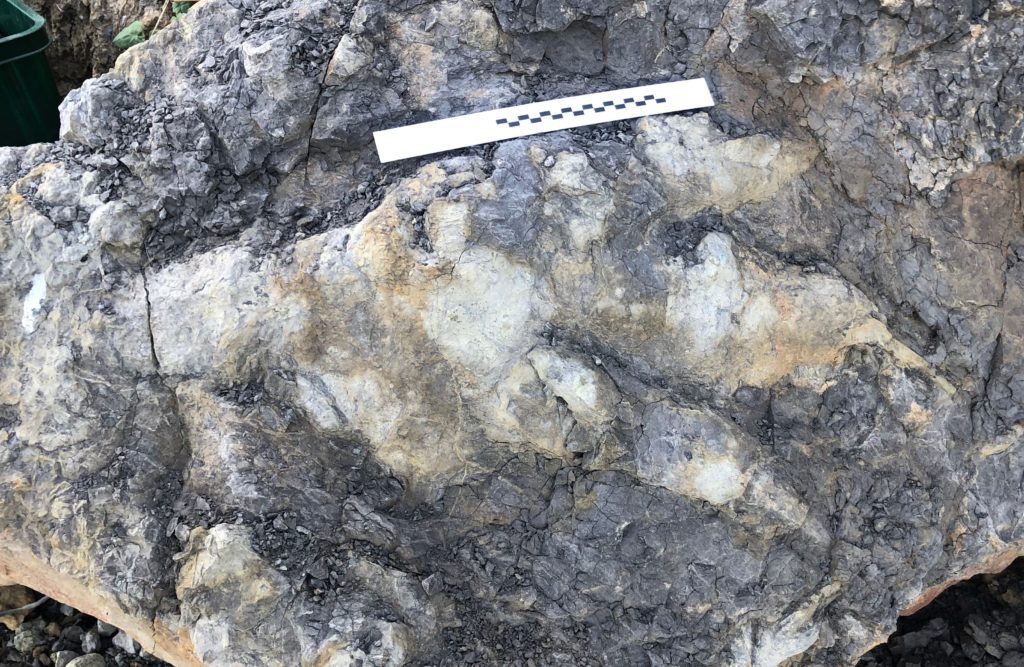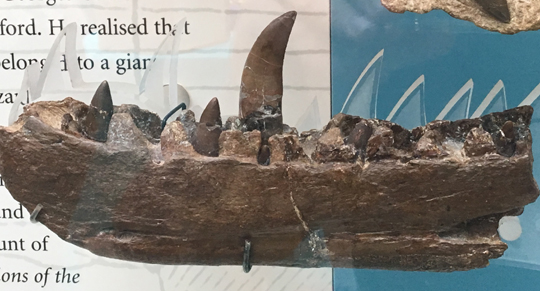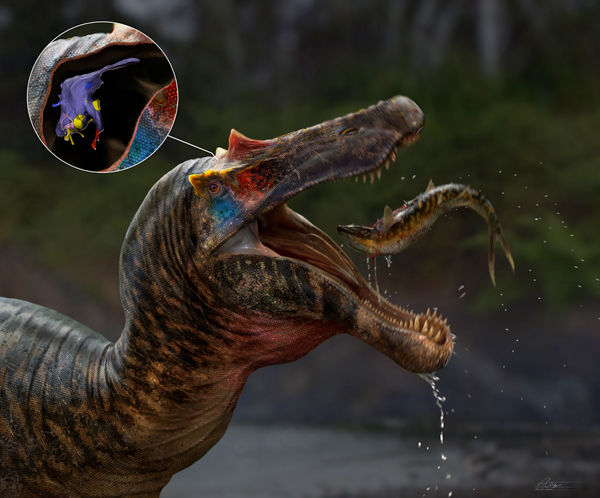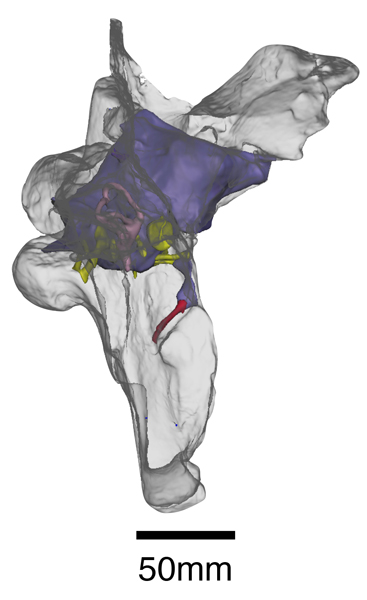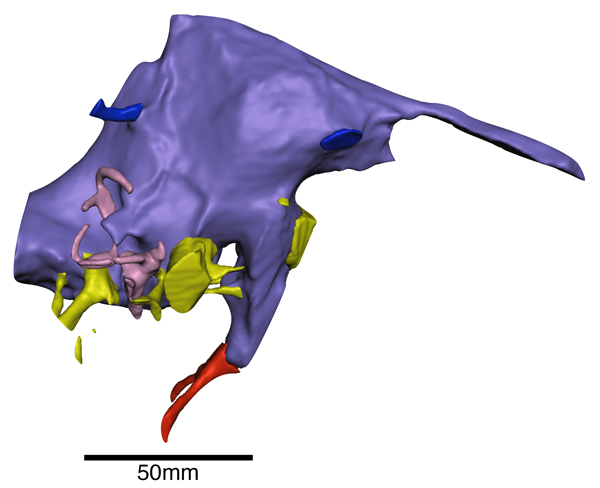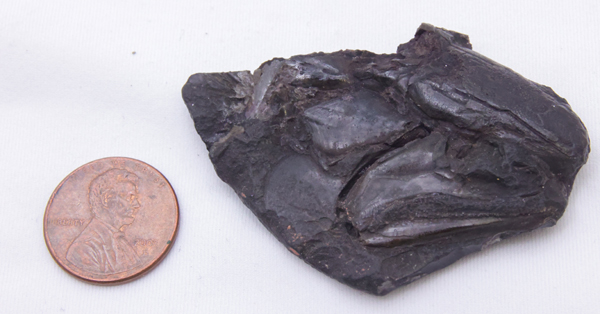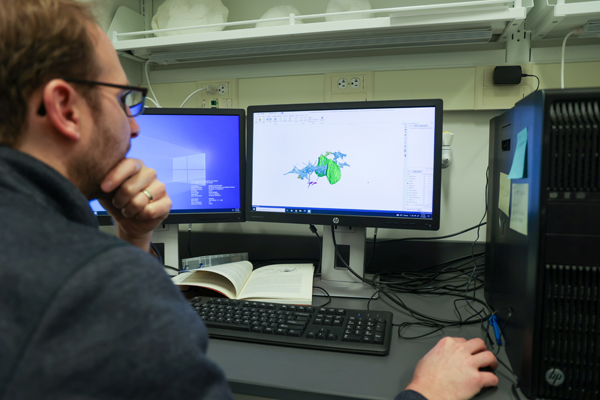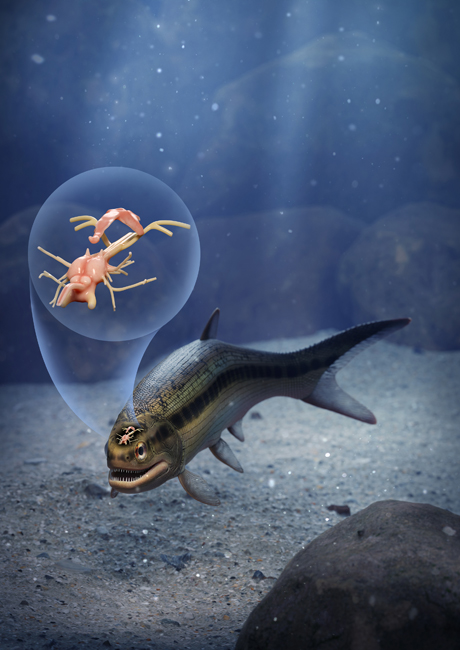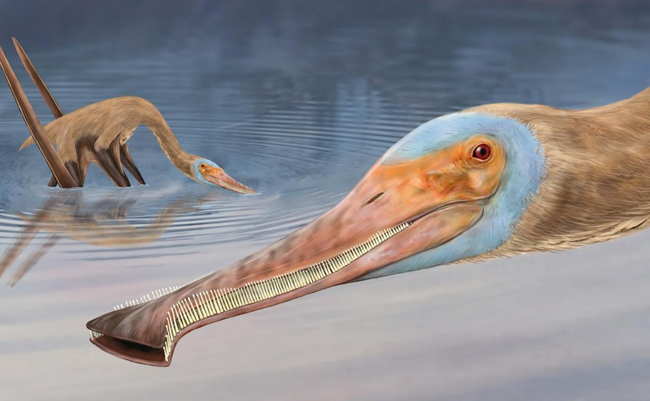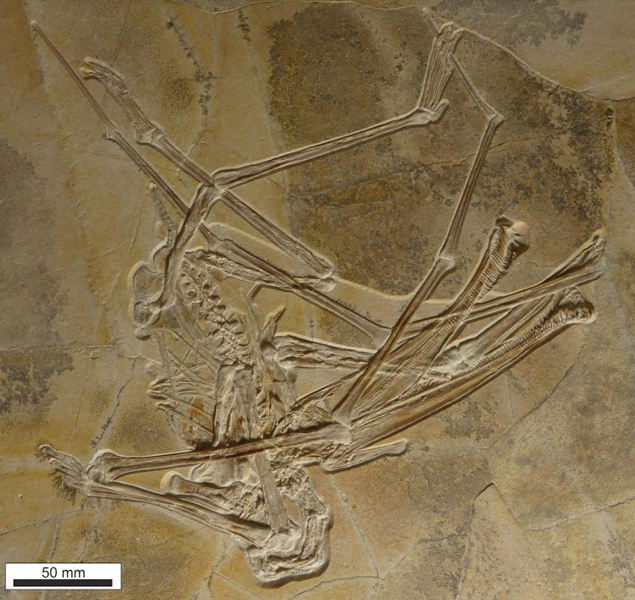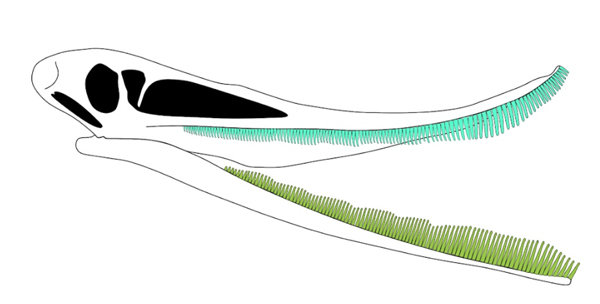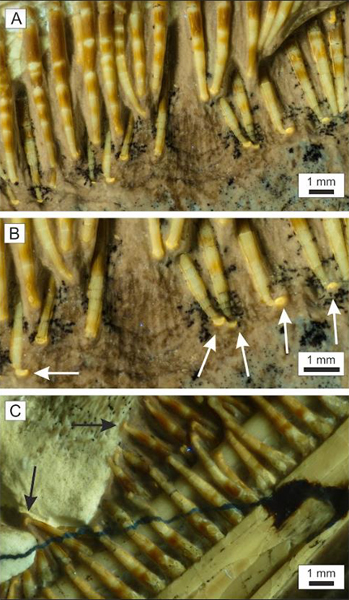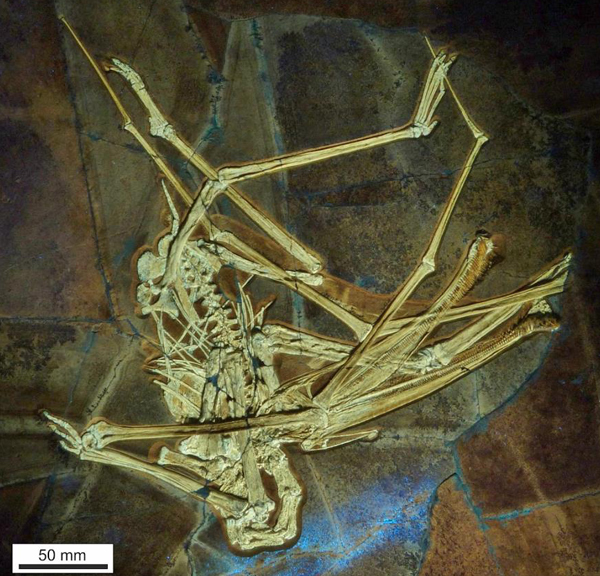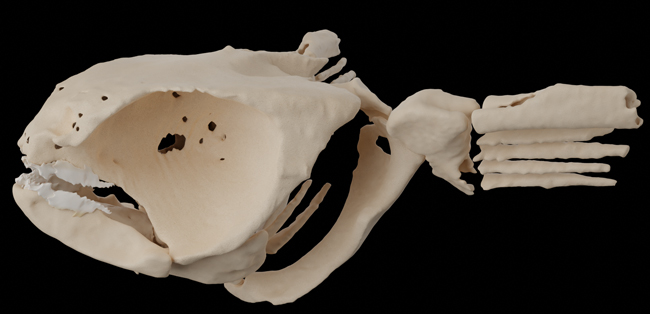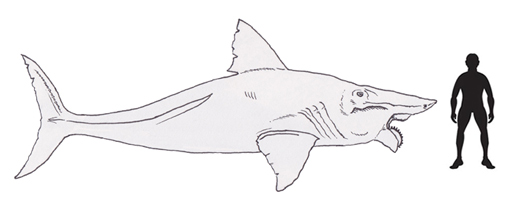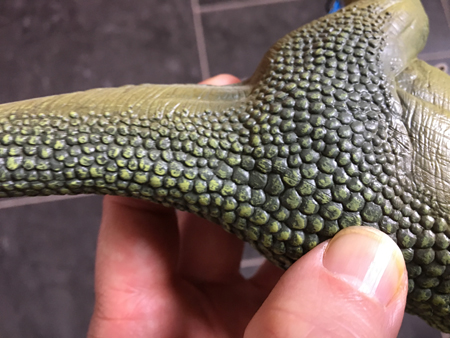Fossil finds, new dinosaur discoveries, news and views from the world of palaeontology and other Earth sciences.
New Research Reveals Earliest Ichthyosaur Fossil Discovered to Date
The earliest ichthyosaur fossil specimen discovered to date has been found on the Arctic island of Spitsbergen. The fossil represents a marine reptile that lived around 252 million years ago. The bones indicate that this animal was not a transitional form, but a fully adapted marine reptile.

Picture credit: Esther van Hulsen
Ichthyosaur Evolution
The evolutionary history of the ichthyosaurs remains contentious. No transitional forms representing land-dwelling tetrapods adapting to a marine habit have been found. However, small, basal ichthyosauriforms are known from the Lower Triassic of China, and the fossils of at least one, primitive Early Triassic, dolphin-shaped member of the Ichthyopterygia has already been described from Spitsbergen (Grippia longirostris).
Thanks to the work of a joint team of Swedish and Norwegian palaeontologists a fresh perspective on the origins of the “fish lizards” is provided by these newly described fossil bones.
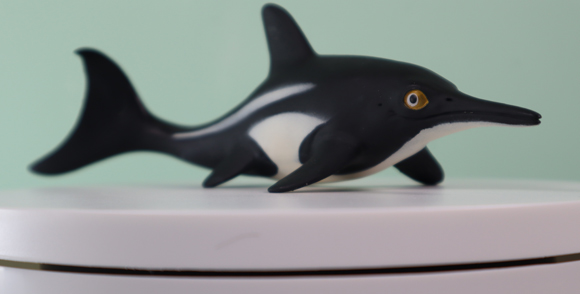
Picture credit: Everything Dinosaur
For models and replicas of typical ichthyosaurs and other marine reptiles: Wild Safari Prehistoric World Models.
The Ichthyopterygia (Ichthyosauria)
Ichthyosaurs were a highly successful, globally distributed group of marine reptiles. The evolved, a “dolphin-like” streamlined body and were active, nektonic predators surviving into the Late Cretaceous.
The first marine reptiles, such as the mesosaurs evolved during the Early Permian. The end-Permian mass extinction event devasted both terrestrial and marine faunas. The cataclysmic event was thought to have led to an evolutionary reset which permitted animals such as the Ichthyosauria to evolve, exploiting niches vacated after the extinction event.
Tetrapods (land-based vertebrates), invaded shallow coastal environments to take advantage of marine predator niches that were left vacant after the mass extinction event. Over millions of years, these early amphibious reptiles became more efficient at swimming and eventually modified their limbs into flippers, developed a ” dolphin-like” body plan, and started giving birth to live young (viviparity). With the evolution of viviparity, there was no need to come ashore in order to lay eggs, so the last ties these creatures had with a terrestrial existence was lost.
The newly described fossil material from Spitsbergen is helping to revise and re-write this previous hypothesis.
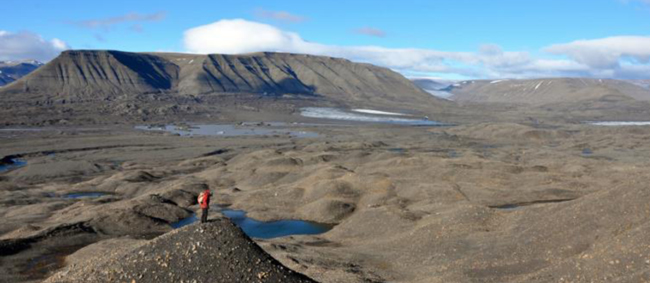
Picture credit: Benjamin Kear
Flower’s Valley Fossils
On western Spitsbergen a valley (Flower’s Valley), cuts deep into the surrounding mountains and provides access to Lower Triassic marine sediments, approximately 250 million years old. The rocks represent mud deposited at the bottom of an ancient sea and snow melt has gradually eroded the mudstone exposing rounded limestone boulders known as concretions. These objects are formed from limey sediments that coalesced around decomposing animal remains, subsequently preserving them in amazing, three-dimensional detail.
In 2014, the field team removed a number of concretions from the Flower’s Valley site. The rocks were taken back to the Natural History Museum at the University of Oslo for further study.
Scientists from The Museum of Evolution at Uppsala University have identified bony fish remains and bizarre “crocodile-like” amphibian bones, together with 11 articulated caudal vertebrae from an ichthyosaur.
Found in Rocks Thought to be Too Old for Ichthyosaur Fossils
Surprisingly, these tail bones occurred within rocks that were supposedly too old for ichthyosaurs. Also, the fossil bones do not represent a transitional form, but they show characteristics associated with geologically younger ichthyosaurs.
The vertebrae are identical to those of geologically much younger, larger-bodied ichthyosaurs, and even preserve internal bone microstructure showing adaptive hallmarks of fast growth, elevated metabolism and a fully oceanic lifestyle.
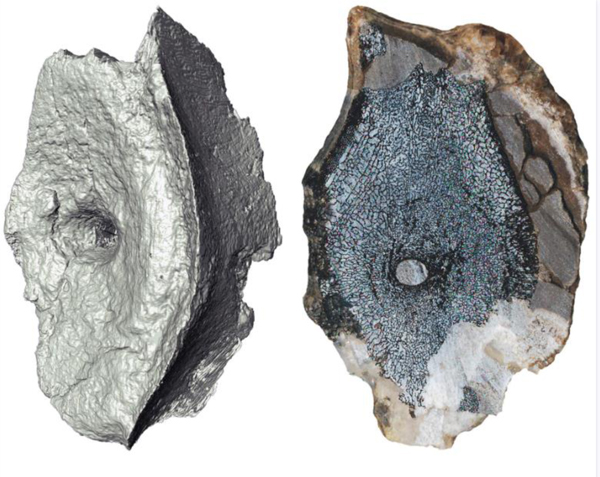
Picture credit: Øyvind Hammer and Jørn Hurum
Dating the Surrounding Rock (Geochemical Testing)
Geochemical testing of the surrounding matrix dated the age of the fossils at approximately two million years after the end-Permian mass extinction. When the estimated timescale of marine reptile evolution is considered, this suggests the origins and early diversification of the Ichthyosauria took place during the Permian and prior to the Mesozoic Era.
These fossils suggest that the popular hypothesis of ichthyosaurs evolving to exploit niches vacated as a result of the end-Permian mass extinction is incorrect. Ichthyosaurs were present prior to the end of the Permian.
The discovery of the oldest ichthyosaur rewrites the popular vision of Age of Dinosaurs (Mesozoic Era), as the emergence timeframe of major reptile lineages. It now seems that at least some groups predated this landmark interval, with fossils of their most ancient ancestors still awaiting discovery in even older rocks on Spitsbergen and elsewhere in the world.
Everything Dinosaur acknowledges the assistance of a media release from the Uppsala University in the compilation of this article.
The scientific paper: “Earliest Triassic ichthyosaur fossils push back oceanic reptile origins” by Kear, B.P., Engelschiøn, V.S., Hammer, Ø., Roberts, A.J. and Hurum, J.H. published in Current Biology.


